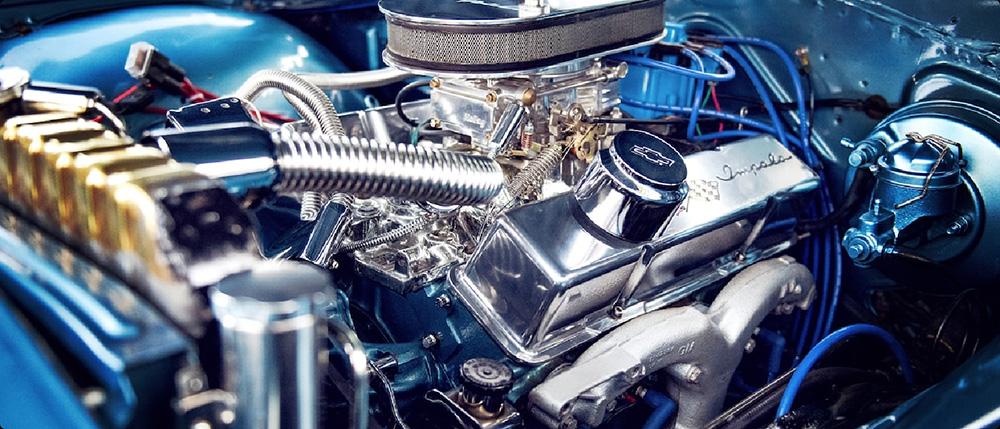Sure! Here's the first part of the soft article on "motor gear repair Yamaha" with the specified format:

Revving Up Confidence: How to Repair and Maintain Your Yamaha Motor Gear for Peak Performance
Yamaha motorcycles and engines have long been symbols of quality, durability, and thrilling performance. Whether you're a seasoned rider or a passionate hobbyist, understanding the mechanics behind your Yamaha's motor gear can make the difference between smooth sailing and unexpected breakdowns. Enter the world of Yamaha motor gear repair—a crucial aspect of keeping your motorcycle running as it should, ensuring every ride is safe, enjoyable, and hassle-free.
Your Yamaha engine’s motor gear plays a pivotal role in transferring power from the engine to the wheels. It’s designed to withstand high stress and demanding conditions, but even the most robust components can face issues over time. When problems start to appear, careful diagnosis and appropriate repairs are essential. Fortunately, many Yamaha motor gear issues can be addressed with proper knowledge and a little elbow grease, saving both time and money.
Understanding Yamaha Motor Gears: The Core Components
Before diving into repair tips, it’s vital to understand what constitutes the motor gear system in a Yamaha motorcycle. Typically, this involves several interconnected parts, including the gear selector, gear shaft, gear teeth, clutch components, and the transmission case.
Gear Selector: The lever or shift mechanism that allows the rider to change gears. Gear Shaft: A vital component that transmits torque; it rotates within the transmission casing. Gear Teeth: The small, precise cogs that interlock to transfer motion between gears. Clutch Components: They engage and disengage the engine from the transmission, facilitating gear shifts. Transmission Case: Encases all the components, providing protection and structural support.
Proper maintenance of these parts is essential to ensure smooth gear shifts, reliable power transfer, and overall longevity of your Yamaha motorcycle.
Common Yamaha Motor Gear Problems
Just as with any mechanical system, Yamaha motor gears can develop issues over time. Recognizing early signs can prevent minor problems from escalating into major repairs.
Gear Slipping or Skipping: This occurs when the transmission unexpectedly jumps out of a gear or fails to hold a gear. Often caused by worn gear teeth or a maladjusted shift linkage. Hard Gear Shifts: Difficulty engaging gears, which could stem from worn clutch plates, contaminated transmission oil, or misaligned components. Grinding Noise: A grinding sound during gear changes typically indicates damaged gear teeth or insufficient lubrication. Incomplete Gears Engagement: The gear may not fully engage, leading to loss of drive or inconsistent power transfer, often associated with worn synchronizers or shift forks. Transmission Leakages: Leaking oil from the transmission case can impair gear operation and cause overheating.
Diagnosing Yamaha Motor Gear Issues
Effective repair begins with accurate diagnosis. Here are some steps to identify common issues:
Visual Inspection: Check for visible damage, worn gear teeth, or oil leaks. Shifting Test: Run the motorcycle and attempt to change gears at different RPMs, noting any difficulties or unusual noises. Oil Analysis: Examine transmission oil for signs of metal particles, which can indicate gear wear. Clutch Examination: Test clutch operation—slipping or difficulty disengaging/clogging can affect gear shifting.
If you're not completely confident in your assessment, consulting with a professional mechanic or Yamaha specialist ensures that the problem is correctly identified before proceeding with repairs. Remember, safety comes first; avoid attempting complicated repairs if you lack experience.
DIY Repairs for Yamaha Motor Gear Problems
Many minor issues are manageable at home, saving money and time. Here are some simple repair tips:
Changing Transmission Oil: Use the manufacturer-recommended oil and change it regularly—typically every 3,000 to 5,000 miles—to prevent gear wear and corrosion. Adjusting the Gear Linkage: Fine-tuning the shift linkage can solve shifting issues without major disassembly. Cleaning the Transmission: Remove debris or dirt that could hinder gear movement. Use suitable degreasers and ensure everything is dry before reassembling. Inspecting and Replacing Worn Components: If minor gear teeth are chipped or worn, replacement parts from Yamaha or authorized suppliers can restore proper function.
When to Seek Professional Help
While DIY repairs work for minor issues, significant problems—such as damaged gear teeth, broken shafts, or complex internal component failure—demand professional intervention. Certified Yamaha mechanics have the specialized tools and expertise to disassemble, diagnose, and repair your motor gear correctly, ensuring long-lasting results.
In the next part, we'll explore advanced repair procedures, maintenance strategies, and how to select the best service providers for Yamaha motor gear repairs. Stay tuned for expert insights that will empower you to keep your Yamaha motorcycle in peak condition.
Kpower has delivered professional drive system solutions to over 500 enterprise clients globally with products covering various fields such as Smart Home Systems, Automatic Electronics, Robotics, Precision Agriculture, Drones, and Industrial Automation.




































